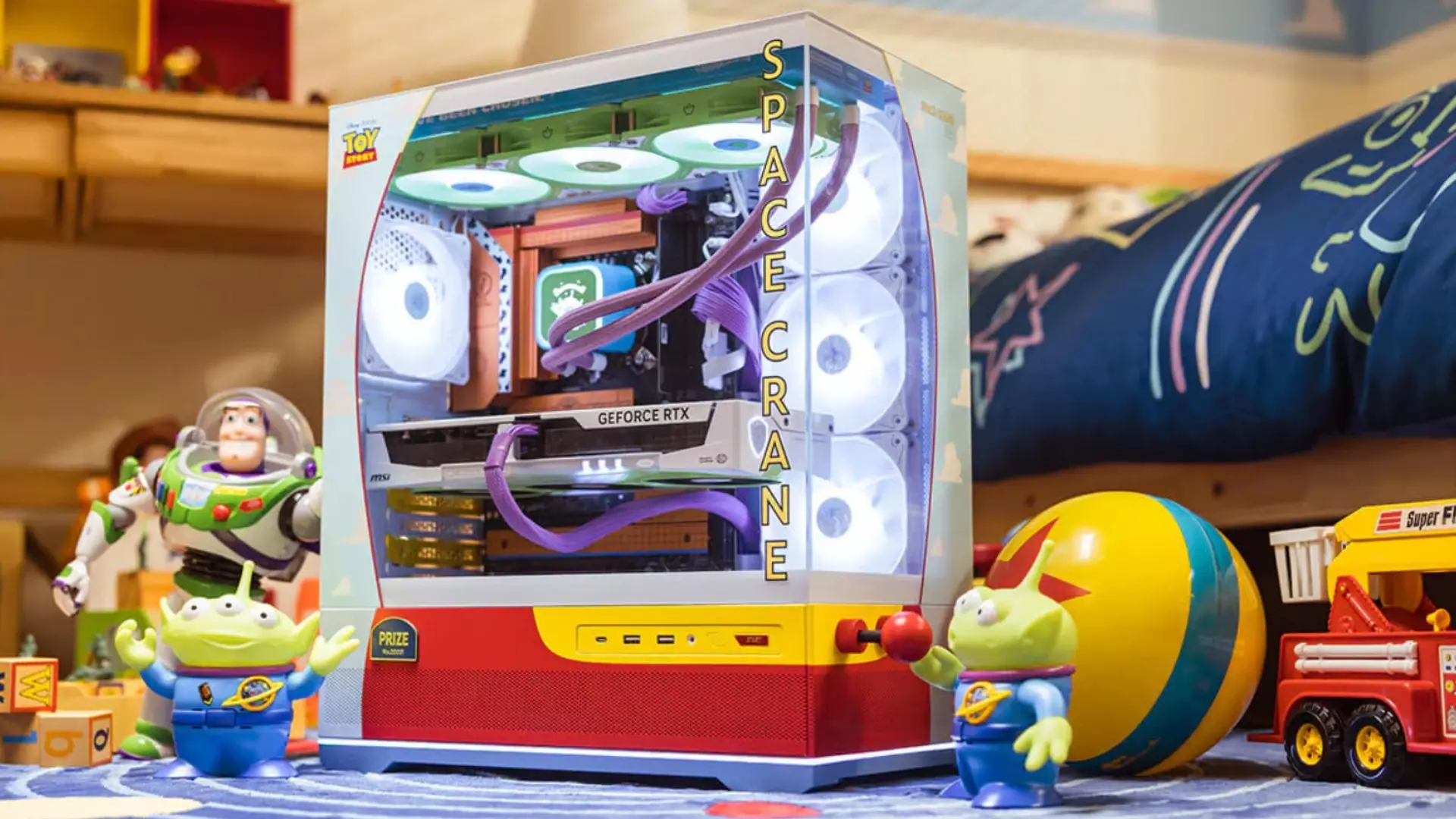Gaming technology continues to evolve at breakneck speed, but sometimes it feels as though aesthetics and brand identities collude to create products that prioritize novelty over quality. Enter MSI’s latest creation—a whimsical, Toy Story-themed gaming rig that celebrates the 30th anniversary of Pixar’s classic film. While it’s easy to be captivated by the enchanting concept, a closer examination reveals that this rig might leave many potential buyers feeling more bemused than overjoyed.
A Dream Come True or a Costly Mistake?
For the devoted Disney and Pixar enthusiast, MSI’s Toy Story gaming PC may seem like a dream come true. The bold colors, playful designs, and nostalgic themes evoke childhood wonder. However, that very allure comes with a hefty price tag—NT$79,900 (approximately $2,653). Given that the primary function of a gaming rig is to deliver exceptional performance, the steep cost begs the question: are consumers paying for nostalgia or performance?
Upon dissecting the components that make up this unique PC, it becomes evident that users might feel like they are paying for a premium based on aesthetics rather than functional excellence. With an Intel Core Ultra 5 245K serving as the brain of the operation, gamers may notice disappointing performance in a market where more powerful CPUs exist at competitive pricing. While MSI has crafted an eye-catching exterior themed around beloved characters like Woody and Buzz Lightyear, the internal specs lack the muscle significant gamers typically seek.
The Colorful Chaos: Design Choices that Divide
MSI has unleashed a wave of vibrant design choices, and while one might admire their creativity, it’s difficult to ignore the chaotic element that they have embraced. The rig features a crane machine-style case adorned in playful hues: a striking red bottom transitions into cheerful blue skies. Each component aims to reflect beloved characters from the film, yet the sum of its parts may confuse rather than delight.
For instance, the motherboard is styled to represent Woody, while the GPU channels the spirit of Buzz Lightyear, and even the power supply is curated to resemble Emperor Zurg. While this attention to character detail is commendable, a truly outstanding gaming rig would achieve a cohesive look without sacrificing style for gimmick. The inclusion of a claw machine joystick and prize box decorations further adds to an eclectic design; however, one must question whether such elements are genuinely practical for serious gaming or if they exist merely as stylistic novelties.
Price vs. Performance: The Eternal Dilemma
The gap between price and performance remains a pressing issue in the gaming market, especially when evaluating this Toy Story rig. Dissecting market options reveals that MSI’s offerings appear overpriced when compared to more traditional gaming setups. Current alternatives feature superior specs—for example, one could find an RTX 5070 rig with an AMD Ryzen 7 9800X3D processor for about $2,100, delivering significantly better gaming experiences.
The realities of market competition highlight the risks of investing in a novelty item that may excel in visual appeal but falters in raw power. While fans may be tempted to purchase this rig due to its unique design and animated spirit, they’ll need to weigh the excitement of childhood nostalgia against the practicality of performance in modern gaming.
The Verdict: A Unique Yet Polarizing Offering
Ultimately, the allure of the Toy Story gaming rig lies in its charm and distinctive character—a nostalgic homage to a franchise that has captured the hearts of many for decades. However, the celebration of Toy Story’s legacy does not absolve it from the blemishes that come with underwhelming technical specifications. Gaming enthusiasts must decide for themselves whether the whimsical appeal of themed hardware is worth the trade-offs in performance and potential regret down the line.
While MSI has marvelously illustrated the chaos of childhood imagination, one can only hope that their next attempt will strike a more harmonious balance between aesthetics and functionality. After all, in a universe where technological advancements reign supreme, nostalgic aesthetics should augment—not eclipse—the quest for top-tier gaming performance.

